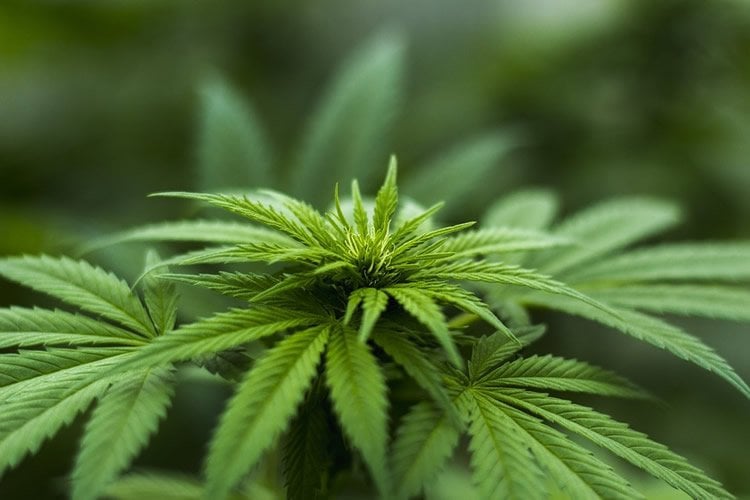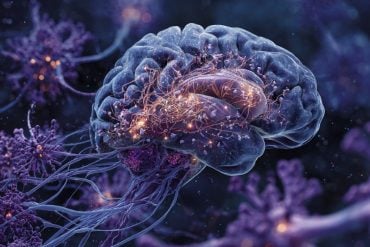Summary: A controversial new study reports cannabis may not be as helpful in treating chronic pain as believed. Researchers say they have found no clear evidence that cannabis can reduce pain severity or pain interference in those with chronic non cancer pain.
Source: University of New South Wales.
Researchers at UNSW Sydney who conducted one of the world’s longest community studies of its type have found no clear role for cannabis in treating chronic non-cancer pain.
The study, funded by the National Health and Medical Research Council and led by the National Drug and Alcohol Research Centre (NDARC) at UNSW Sydney, found that participants who were using cannabis reported over a series of assessments they were experiencing greater pain and anxiety, were coping less well with their pain, and reported that pain was interfering more in their life, compared to those not using cannabis. There was no clear evidence that cannabis led to reduced pain severity or pain interference or led participants to reduce their opioid use or dose.
The four-year Pain and Opioids IN Treatment (POINT) study is one of the world’s longest in-depth community studies on pharmaceutical opioids and chronic non-cancer pain. Researchers examined the effect of cannabis on participants’ pain, on the extent to which pain interfered with their everyday life, and on their prescribed opioid use.
The use of cannabis for medicinal purposes has been increasing worldwide, and chronic non-cancer pain is the most common reason cited for medicinal use. There has been speculation that using cannabis for pain may also allow people to reduce their prescribed opioid use. To date however, long-term evidence has been limited: randomised control trials of cannabis for pain typically have short durations of generally three months and tend to exclude patients with complex physical and mental health problems; and there have been no controlled studies of the potential “opioid sparing” effects.
For the POINT study, participants were recruited through community pharmacies and completed comprehensive assessments of their pain, physical and mental health, medication and cannabis use annually. Approximately 80% of the sample completed each assessment. Participants had been in pain for a median of 10 years and taken prescribed opioids for their pain for a median of four years. There were very high rates of physical and mental health problems.

The results, published in Lancet Public Health, suggest that there is a need for caution because a clear role for cannabis in treating chronic non-cancer pain was not found.
“Chronic non-cancer pain is a complex problem. For most people, there is unlikely to be a single effective treatment,” said lead author Dr Gabrielle Campbell.
“In our study of people living with chronic non-cancer pain who were prescribed pharmaceutical opioids, despite reporting perceived benefits from cannabis use, we found no strong evidence that cannabis use reduced participants’ pain or opioid use over time.”
Funding: National Health and Medical Research Council and the Australian Government funded this study.
Source: University of New South Wales
Publisher: Organized by NeuroscienceNews.com.
Image Source: NeuroscienceNews.com image is in the public domain.
Original Research: Open access research for “Effect of cannabis use in people with chronic non-cancer pain prescribed opioids: findings from a 4-year prospective cohort study” by Gabrielle Campbell, Wayne D Hall, PhD, Amy Peacock, PhD, Nicholas Lintzeris, MD, Raimondo Bruno, PhD, Briony Larance, PhD, Suzanne Nielsen, PhD, Milton Cohen, MD, Gary Chan, PhD, Richard P Mattick, PhD, Fiona Blyth, PhD, Marian Shanahan, PhD, Timothy Dobbins, PhD, Michael Farrell, MD, and Louisa Degenhardt, PhD in Lancet Public Health. Published July 2018.
doi:10.1016/S2468-2667(18)30110-5
[cbtabs][cbtab title=”MLA”]University of New South Wales”Study Finds No Strong Evidence Cannabis Reduces Chronic Pain.” NeuroscienceNews. NeuroscienceNews, 4 July 2018.
<https://neurosciencenews.com/cannabis-pain-9512/>.[/cbtab][cbtab title=”APA”]University of New South Wales(2018, July 4). Study Finds No Strong Evidence Cannabis Reduces Chronic Pain. NeuroscienceNews. Retrieved July 4, 2018 from https://neurosciencenews.com/cannabis-pain-9512/[/cbtab][cbtab title=”Chicago”]University of New South Wales”Study Finds No Strong Evidence Cannabis Reduces Chronic Pain.” https://neurosciencenews.com/cannabis-pain-9512/ (accessed July 4, 2018).[/cbtab][/cbtabs]
Abstract
Effect of cannabis use in people with chronic non-cancer pain prescribed opioids: findings from a 4-year prospective cohort study
Background
Interest in the use of cannabis and cannabinoids to treat chronic non-cancer pain is increasing, because of their potential to reduce opioid dose requirements. We aimed to investigate cannabis use in people living with chronic non-cancer pain who had been prescribed opioids, including their reasons for use and perceived effectiveness of cannabis; associations between amount of cannabis use and pain, mental health, and opioid use; the effect of cannabis use on pain severity and interference over time; and potential opioid-sparing effects of cannabis.
Methods
The Pain and Opioids IN Treatment study is a prospective, national, observational cohort of people with chronic non-cancer pain prescribed opioids. Participants were recruited through community pharmacies across Australia, completed baseline interviews, and were followed up with phone interviews or self-complete questionnaires yearly for 4 years. Recruitment took place from August 13, 2012, to April 8, 2014. Participants were asked about lifetime and past year chronic pain conditions, duration of chronic non-cancer pain, pain self-efficacy, whether pain was neuropathic, lifetime and past 12-month cannabis use, number of days cannabis was used in the past month, and current depression and generalised anxiety disorder. We also estimated daily oral morphine equivalent doses of opioids. We used logistic regression to investigate cross-sectional associations with frequency of cannabis use, and lagged mixed-effects models to examine temporal associations between cannabis use and outcomes.
Findings
1514 participants completed the baseline interview and were included in the study from Aug 20, 2012, to April 14, 2014. Cannabis use was common, and by 4-year follow-up, 295 (24%) participants had used cannabis for pain. Interest in using cannabis for pain increased from 364 (33%) participants (at baseline) to 723 (60%) participants (at 4 years). At 4-year follow-up, compared with people with no cannabis use, we found that participants who used cannabis had a greater pain severity score (risk ratio 1·14, 95% CI 1·01–1·29, for less frequent cannabis use; and 1·17, 1·03–1·32, for daily or near-daily cannabis use), greater pain interference score (1·21, 1·09–1·35; and 1·14, 1·03–1·26), lower pain self-efficacy scores (0·97, 0·96–1·00; and 0·98, 0·96–1·00), and greater generalised anxiety disorder severity scores (1·07, 1·03–1·12; and 1·10, 1·06–1·15). We found no evidence of a temporal relationship between cannabis use and pain severity or pain interference, and no evidence that cannabis use reduced prescribed opioid use or increased rates of opioid discontinuation.
Interpretation
Cannabis use was common in people with chronic non-cancer pain who had been prescribed opioids, but we found no evidence that cannabis use improved patient outcomes. People who used cannabis had greater pain and lower self-efficacy in managing pain, and there was no evidence that cannabis use reduced pain severity or interference or exerted an opioid-sparing effect. As cannabis use for medicinal purposes increases globally, it is important that large well designed clinical trials, which include people with complex comorbidities, are conducted to determine the efficacy of cannabis for chronic non-cancer pain.







